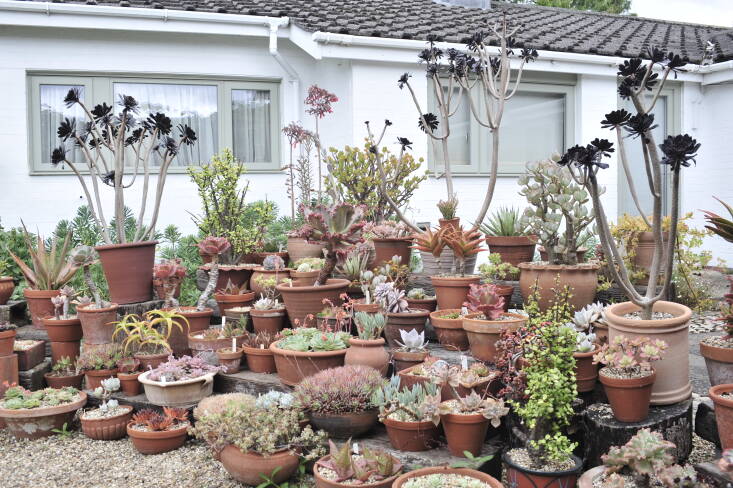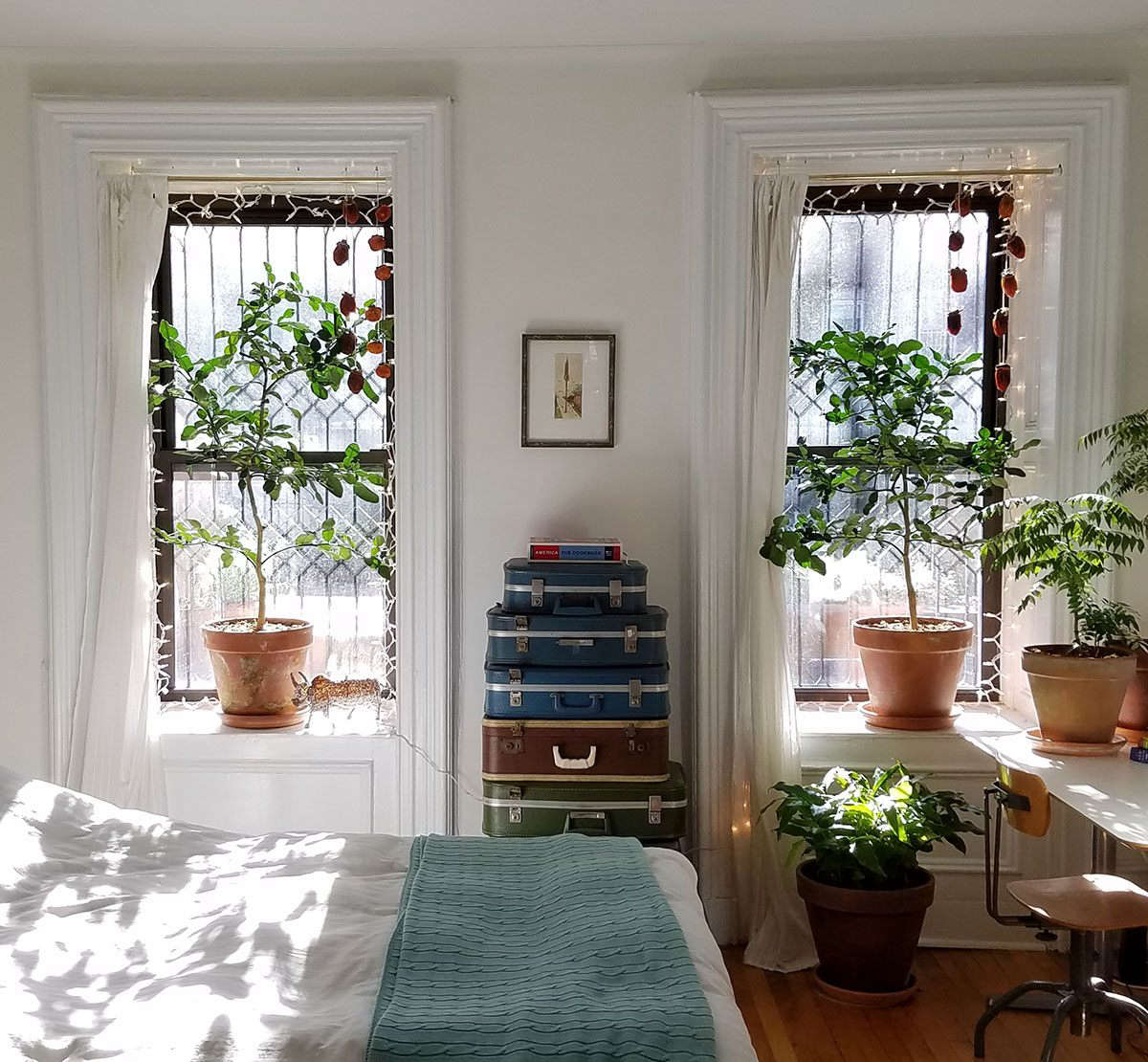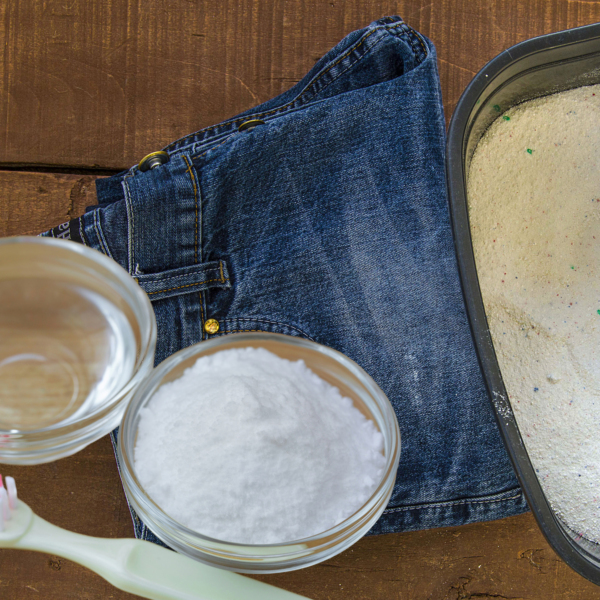Fall is officially here—according to both the calendar and the influx of “sweater weather” clips on social media. And even though the temperature doesn’t feel autumn-like yet where I live in the Bay Area, I’m ready to start planning for the upcoming cooler months.
While I live in a moderately mild area (the worst it gets for me in the coming months is a light frost), I know many of you live in less temperate zones, where just one chilly night can wreak havoc on delicate leaves. What to do? Move your outdoor potted plants indoors for the winter. But the thing is, you can’t just pick them up and move them inside and be done.
Keep reading to learn my top tips for keeping your potted plants chipper all winter.
When should you move plants indoors?

As a general rule, if nighttime temperatures are expected to dip to 50 to 55° F for prolonged periods of time, then tender plants should be brought in. Usually this cold swing happens about four to six weeks before your area’s average first frost. So, start by checking a plant’s hardiness zone and if your plant’s zone is higher than the zone you live in, it will likely need to be brought indoors during winter. If intermittent cold nights are predicted, you can leave your plants outdoors and use frost cloth or a light bed sheet as protection over night and then remove it in the morning.
What sorts of plants need to be moved indoors?

Here are some of the most common houseplants to overwinter, but this is by no means a comprehensive list: begonias, coleus, basil, hibiscus, cannas, citrus, and some tender cacti and succulents.
For added advice, I reached out to Sonja Cruz, aka SunnyBlooms on the Palmstreet app, a live shopping marketplace for buying and selling plants. Sonja shares that she has successfully transitioned aloe veras, spider plants, and cacti. She adds, “Make sure to put your aloe vera in a spot receiving plenty of sunlight, and spider plants can thrive indoors with indirect light away from the intense winter sun that can come through windows. Also, when moving tender cacti inside, dry air is important as well as bright sunlight to encourage continued growth.” Sonja also recommends moving tender herbs such as basil as this plant doesn’t handle frost; plus by bringing them indoors you can continue enjoying fresh herbs throughout the winter.
How to prep and prepare for the move?

Plants are sensitive creatures who need time to acclimate to the indoors. This means that the the longer you wait to bring them in, the more likely they might get transportation shock. Basically, significant changes in light and temperature negatively affect plants and can cause them to wilt, drop leaves, and perhaps perish. So, to make the migration smooth and successful, acclimate your plants before the relocation by gradually moving your plants to areas with more shade, ideally over the course of 10 days. Reverse the process in spring by slowly letting your plants spend time outdoors in the shade before exposing them to more light and wind.
Another good thing to do: prepare the accommodations for the vacationing plants. This means situating them away from furnace vents, heaters, and drafts. And placing them in a spot with the right amount of light: Plants that require full sun will prefer a southern-facing window, and plants that like part sun will accept an east- or west-facing window. If bright natural light isn’t available in your home, consider purchasing full spectrum lights or grow lights to place near your plants. Last, wash any dirty windows so that more light can stream in.
What are some of the biggest mistakes to avoid when transitioning plants?

A big no-no is forgetting to thoroughly check for hitchhiking bugs and disease on your plants before you bring them in. Closely inspect your plants for mealybugs, aphids, scale, and spider mites as these pests can quickly spread indoors and potentially wreak destruction on your other houseplants. If you notice a problem, either manually clean off the bugs, give the leaves a spray of water from a hose, or use a natural horticultural oil. You can also prune away dead and diseased leaves now. Another mistake is unwittingly bringing in toxic plants and making them dangerously accessible to nibbly cats, dogs, or overly curious young children. (The ASPCA’s list of toxic and non-toxic plants is a great resource.)
Once your plants are in their temporary space, you’ll have to adjust how you care for them. Remember that plants, once indoors, grow slower in less light, and soil doesn’t dry out as quickly, which means that you won’t need to water them as much. Not adjusting how much you water them will lead to over-watering and root rot. The solution? Sonja stresses that it’s crucial to check the moisture of the soil before watering.
You’ll also need to add another chore: “Dust can accumulate on leaves, hindering photosynthesis, so clean leaves regularly with a damp cloth to keep them healthy and looking their best.” And don’t panic when you see some yellowing or fallen leaves on your newly moved plant—that’s a normal reaction to the change in their environment. Just stay calm in your cozy sweater, and carry on.


